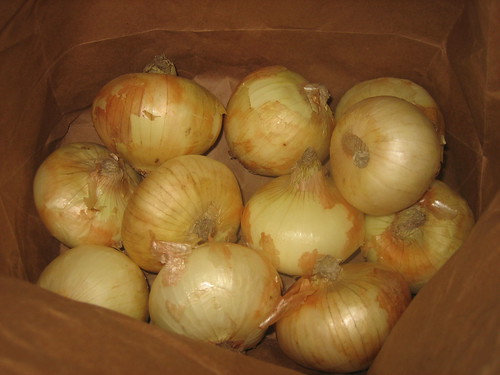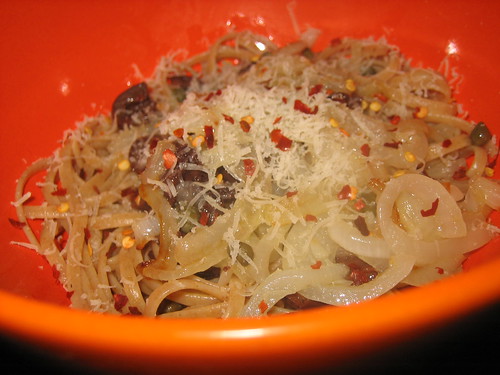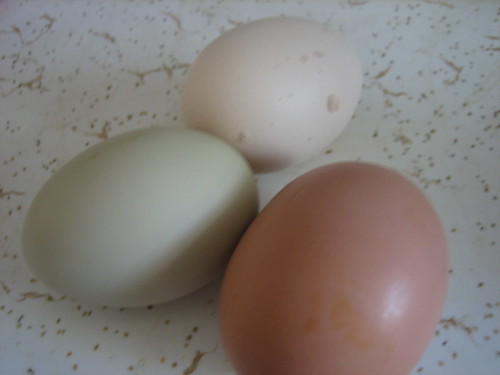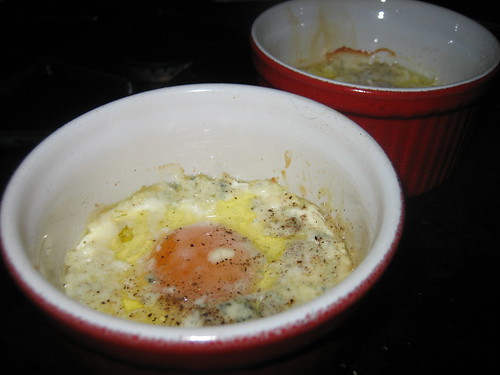Rhubarb is one of those plants that one has to wonder why we ever started eating it. I mean, the leaves are poisonous, the stalks are so sour that they leave your face puckered, and it's a bit tough and stringy, to boot. To be fair, we didn't eat it for a long time. Rhubarb was primarily used medicinally until the 17th century, which coincided with the advent of cheap sugar (and an increase in cavities). It appears to have become an extremely popular form of dessert in England, where they appreciated tartness. In fact, a popular method of eating rhubarb, from then through the present day, is simply to dip the stalks directly into granulated sugar for each bite.
Rhubarb's popularity continued in the U.S. when English settlers brought it with them. Since it is a perennial plant, and requires little care, it tended to spread with the ever-westward moving Americans. Rhubarb's popularity peaked in the WWII and postwar period, and it has declined ever since, especially as more and more Americans have flocked to cities and abandoned their gardens, forgetting about this once ubiquitous plant. However, with the ever increasing popularity of farmers markets', people are re-discovering rhubarb in great numbers every year. It has also become a popular featured item on seasonal restaurant menus across the nation.
Rhubarb may be tough and stringy when raw, but cooked rhubarb becomes wonderfully tender. With the right blend of sugar, it is imbued with the perfect balance of sour and sweet for a dessert or a savory sauce. Many people like to pair it with other sweet fruits for a more balanced flavor profile, strawberry rhubarb pies and jams being one of the most popular combinations. I, myself, am a rhubarb purist. I consider the finest expression of rhubarb to be my mother's rhubarb custard pie, which I make faithfully every year.
Rhubarb-Custard Pie
1-1/2 c sugar
1/4 c flour
1/4 tsp nutmeg
dash of salt
3 eggs
4 c rhubarb
2 tbsp butter
Mix dry ingredients together. Beat egg just until smooth & add to dry
ingredients. Stir until smooth. Stir in rhubarb until coated. Line
pie pan with crust. Pour in rhubarb mixture. Dot with chunks of
butter. Top with lattice crust & seal. Bake at 400 F for 50 minutes.
1/4 c flour
1/4 tsp nutmeg
dash of salt
3 eggs
4 c rhubarb
2 tbsp butter
Mix dry ingredients together. Beat egg just until smooth & add to dry
ingredients. Stir until smooth. Stir in rhubarb until coated. Line
pie pan with crust. Pour in rhubarb mixture. Dot with chunks of
butter. Top with lattice crust & seal. Bake at 400 F for 50 minutes.
Or, you could go with another dessert favorite, rhubarb crisp.
Rhubarb Crisp
4 c. rhubarb
1/2 tsp salt
1-1/3 to 2 c. sugar (to taste)
3/4 c. flour
1 tsp. cinnamon
1/3 c. butter
1/2 c. toasted almonds (optional)
Mix salt, sugar, flour, & cinnamon.
Cut butter into mixture so it's crumbly. Add almonds.
Put Rhubarb in 8x8 pan. Sprinkle topping over rhubarb.
Bake at 350 for 40 to 50 minutes.
There are, of course, endless variations that you can do with either of these recipes (personally, I think that rhubarb and cardamom would pair well), and I like the idea of baking the crisp in individual ramekins and serving with a scoop of ice cream.
There are some savory applications as well - for instance, a fattier meat, such as pork or duck, would pair well with a rhubarb based sauce. I have also seen several blog posts for making things such as rhubarb simple syrup. The point is, there are endless variations that you can make, but you'd better do it soon, before the rhubarb season is over. So whether you get it from the farmer's market, or Schnuck's, or wherever, enjoy it while it lasts.









